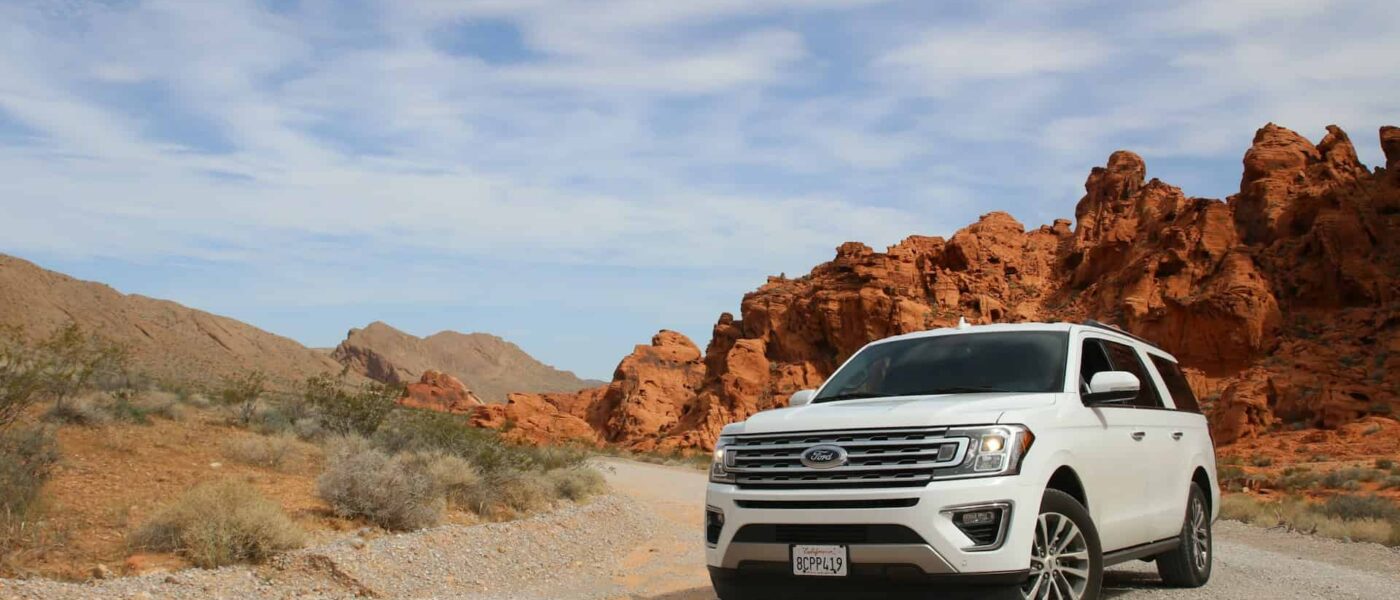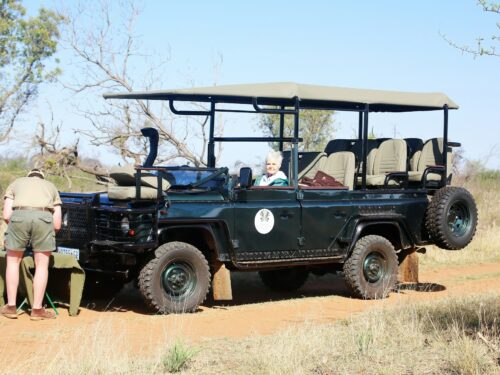
Hiring a car abroad can be daunting for many travelers, navigating unfamiliar rules and options. But there’s nothing like hitting the open road in a foreign country, exploring new spots on your terms and in your own time.
Our guide simplifies this process, offering you essential tips and tricks for a hassle-free experience.
Here is an overview:
Do You Really Need to Hire a Car Abroad?
When considering whether you really need a rental car for your upcoming trip, it can be helpful to explore how others like you travel in your destination. Understanding the transportation options commonly used by travelers like yourself can provide valuable insights into the feasibility and convenience of renting a car.
By researching how others navigate the same destination, you can assess factors such as public transportation availability, ride-sharing services, walking distances, and local infrastructure. This information can help you decide whether a rental car is essential for your travel needs or if alternative modes of transportation may better suit your itinerary.
Related: Top Road Trips You Need to Make and the Cars to Make Them In

Research and Planning: Preparing for Hiring a Car Abroad
Before getting to the rental, you first need to do some research.
Plan Your Route
Planning your route is essential for a smooth and enjoyable journey when hiring a car abroad. Researching and planning your route can help you make the most of your trip and ensure you don’t miss out on any must-see attractions or scenic drives.
By planning the route, you can decide on the best pick-up and drop-off locations for your rental car. By “best,” I mean the most convenient place but also cost-effective. For instance, if your travel starts in a big city, you most likely won’t need a rental car for the first few days of your urban vacation and can use public transportation, taxis or other ride-sharing options. This way you can cut down the rental days and city parking costs. Later, you can also check whether renting from city locations is cheaper than renting at the airport and consider which is better for you.
Lastly, you should consider if you make a circular route, where you start and finish your rental at the same office or make a one-way rental and drop off your car at another location. It might incur additional costs (a one-way fee), but most rental agencies allow it as long as they have rental offices at both locations.
Selecting the Perfect Vehicle for Your Travel Needs
When renting a car, rental companies typically categorize vehicles into different types or groups based on size, features, and other characteristics. These categories help travelers choose a vehicle that best suits their needs.
Common car types and groups include:
- Economy Cars: Economy cars are small, fuel-efficient vehicles ideal for solo travelers or couples on a budget. They offer basic amenities and are typically easy to maneuver and park in urban areas. Examples include the Ford Fiesta, Toyota Yaris, or Volkswagen Polo.
- Compact Cars: Compact cars are slightly larger than economy cars and offer more space for passengers and luggage. They are suitable for small families or groups of friends traveling short to medium distances. Examples include the Toyota Corolla, Nissan Sentra, or Hyundai Elantra.
- Midsize Cars: Midsize cars balance comfort, space, and fuel efficiency. They are suitable for families or groups requiring more room for passengers and luggage. Midsize cars are ideal for longer road trips or vacations. Examples include the Honda Accord, Ford Fusion, or Toyota Camry.
- Full-Size Cars: Full-size cars provide ample space for passengers and luggage, making them suitable for larger families or groups traveling long distances. They offer more comfort and amenities compared to smaller vehicle categories. Examples include the Chevrolet Impala, Ford Taurus, or Toyota Avalon.
- SUVs (Sport Utility Vehicles): SUVs are versatile, with increased ground clearance and cargo space, making them suitable for outdoor adventures or traveling in rugged terrain. They offer seating for five or more passengers in various sizes, from compact to full-size. Examples include the Ford Escape (Compact SUV), Toyota RAV4 (Midsize SUV), or Chevrolet Tahoe (Full-Size SUV).
- Minivans: Minivans are spacious vehicles with multiple rows of seating, making them ideal for large families or groups requiring extra passenger and cargo space. They offer sliding doors for easy access and are equipped with features for comfort and convenience. Examples include the Chrysler Pacifica, Honda Odyssey, or Toyota Sienna.
- Convertible Cars: Convertible cars feature a retractable roof that can be opened or closed, allowing passengers to enjoy the open air while driving. They are popular for leisurely drives in scenic locations or coastal areas. Examples include the Mazda MX-5 Miata, Ford Mustang Convertible, or BMW 4 Series Convertible.
- Luxury Cars: Luxury cars offer premium features, comfort, and performance, catering to travelers seeking a high-end driving experience. They are equipped with advanced technology and upscale amenities. Examples include the Mercedes-Benz E-Class, BMW 5 Series, or Audi A6.
When choosing a car type, consider the number of passengers, amount of luggage, destination, driving preferences, and budget. It’s also essential to familiarize yourself with the ACRISS (Association of Car Rental Industry Systems Standards) codes used by rental companies to classify vehicles. These codes provide a standardized way to describe car categories and features.

Example of ACRISS Code:
- Compact Car: EDMR (e.g., Ford Focus)
- SUV (Intermediate): IFAR (e.g., Toyota RAV4)
- Luxury Car: LDAR (e.g., Mercedes-Benz C-Class)
Related: Tips For Hiring a Rental Car in Japan

Booking a Rental Car Abroad
There are a few ways to book your rental car abroad.
Booking in Advance vs. On-the-Spot Rentals
If your vacation depends on driving around, you should forget about renting On-the-Spot! You should only consider that if the car hire is optional and you have other means of transportation in hand.
If you don’t book upfront, you will most likely waste your time looking for car rental options and end up with a non-optimal car option or in the worst case, no cars will be available – which might be the case for high season peaks.
Choosing the Right Rental Company
This one is the key to your experience. While some rental companies offer very low prices, you may pay extras at the rental desk during pickup or after car return due to made-up defects or other fees.

The key here is to spend some time researching. Consider reading through Google Maps reviews, which is an unfiltered platform where the agencies cannot pay or hide bad reviews. On the other hand, there might be some spammy reviews there, so read carefully and consider which comments and reviews are authentic.
Remember that every rental branch may offer a different level of service, so don’t automatically go with your favorite rental brand. You should consider both international brands and local, unknown brands.
Insurance Options and Understanding Coverage Policies
Car rental insurance abroad can vary depending on the country and the rental company. It also varies based on where you are coming from. Let’s put it in order.
Damages or theft can happen when renting a car. In most cases the rental agency will not hold you liable to the full amount of the car value. They will include such coverage, which will limit your liability, so neither you nor they are at risk of the car’s total value. This excludes residents of the USA, where usually the offers they get online exclude those coverages, assuming they will use their car insurance (on domestic rentals) or their credit card insurance – for rentals abroad.
There are common types of insurance coverage you might encounter while booking online:
Collision Damage Waiver (CDW):
- CDW insurance covers damage to the rental vehicle in the event of a collision or accident.
- It typically waives the renter’s responsibility for paying for repairs or damages to the rental car, subject to certain terms and conditions.
- However, CDW often comes with a deductible, the amount the renter must pay out of pocket before the insurance coverage kicks in.
- CDW may exclude certain types of damage, such as damage to tires, windshield, or undercarriage, so reviewing the policy carefully is essential.
- It is usually included in the price you get online unless you’re using a booking platform for USA customers. In such case, you should make sure it is included in the price, or you will use your credit card’s rental insurance.
Theft Protection Coverage:
- Theft protection coverage, also known as Theft Waiver (TW), provides insurance coverage in case the rental car is stolen.
- Similar to CDW, theft protection coverage typically comes with a deductible that the renter is responsible for paying.
- It’s important to note that theft protection coverage may not apply if the rental car is stolen due to negligence, such as leaving the keys in the ignition or failing to lock the vehicle.
- The same goes here – it is usually included in the price but you need to check.
Personal Accident Insurance (PAI):
- PAI is insurance coverage that provides compensation for medical expenses and personal injuries sustained by the driver and passengers in the rental vehicle in the event of an accident.
- This coverage may include reimbursement for medical treatment, ambulance fees, and even death benefits in case of a fatal accident.
- PAI is optional and may duplicate coverage already provided by the renter’s health insurance or travel insurance, so reviewing existing policies before purchasing PAI from the rental company is essential. You most likely won’t need it if you pay for travel insurance.
There are a couple of two other terms you should be aware of:
Super CDW (SCDW) and Excess Refund Insurance. In summary, they offer renters options to reduce their financial liability in case of damage or theft to the rental vehicle. While they offer benefits such as peace of mind and simplified claims processes, they come with additional costs that renters should consider when making their rental decisions.
Here’s an overview of each, along with their pros and cons:
- Excess Refund Insurance:
- Excess Refund Insurance, also known as Excess Waiver or Excess Reduction, is an optional insurance policy that reduces or eliminates the excess/deductible amount that the renter is responsible for paying in case of damage or theft to the rental vehicle.
- Pros:
- Reduces financial liability: Excess Refund Insurance can reduce or eliminate the out-of-pocket expenses for damages to the rental car, providing peace of mind to renters.
- Comprehensive coverage: it often provides broader coverage compared to standard CDW/SCDW, including coverage for damages to parts of the vehicle typically excluded, such as tires, windshield, and undercarriage.
- It is usually cheaper than opting-in to the SCDW option.
- Cons:
- Additional cost: Excess Refund Insurance typically comes at an extra cost, increasing the overall rental expense.
- Limited coverage: Some Excess Refund Insurance policies may have exclusions or limitations on coverage, so renters should carefully review the terms and conditions.
- There’s a claims process: After paying for the damages to the rental agency, you will need to file a claim to refund your excess. While today’s claims process is online and easy, it is an extra step you need to make to get your money back.
- 2Super Collision Damage Waiver (SCDW):
- SCDW is an enhanced version of Collision Damage Waiver (CDW) that further reduces or waives the renter’s financial liability in case of damage to the rental vehicle. It is sometimes called Zero Excess.
- Pros:
- Lower financial responsibility: SCDW reduces or eliminates the deductible/excess amount that the renter is responsible for paying, minimizing financial liability.
- VIP feeling: the rental agency will not bother you with scratches or dents made to the car during your rental. They will not ask you for a high deposit and sometimes waive the deposit completely.
- Cons:
- Higher cost: SCDW usually comes at a higher cost than standard CDW or Excess Refund Insurance, potentially increasing the overall rental expenses.
- Limited availability: Not all car rental companies may offer SCDW, and its availability may vary depending on the location and the rental company.
Make the Booking
While there are different online options to book a car. We at the Travel Dudes recommend using our preferred car rental search engine PaapmPaapm (yes – it pronounced how the horn sounds, funny right?)
What we really like about it is that many of our considerations are visible during the search. We can filter for recommended agencies only – based on Google Reviews for the actual rental office (and not by ranking of the entire agency brand). We can also clearly see and filter by the included insurance options such as Zero Excess / SCDW or basic insurance for cheaper offers (if we plan on using another insurance of our credit card for instance). We can also filter by the cancellation options – such as a filter for Free Cancellation offers.
While they show a wide variety of offers, they are not a booking agent website. It means they will show your offers from other websites and let you find your way while highlighting any important considerations you should make with every offer.
The Car Pickup Process
Locating the Rental Desk
- Upon arrival at the rental location, look for signs directing you to the rental car area or rental desk within the airport terminal or rental office.
- Approach the rental desk and be prepared to provide your reservation details or confirmation number to the rental agent.
Showing Your Documents
- Present your valid driver’s license, passport, and any other required documents specified by the rental company and local regulations.
- Some countries may also require an international driving permit (IDP), so make sure to have this if necessary.
- Important! Most rental agencies require a valid credit card to take a deposit of. This credit card must be of the same person (have the same name) as the main driver on the booking. You might get rejected if the credit card is not with the same exact name or if you hold a debit card or a virtual / prepaid credit card.
Reading Through the Rental Contract
- Take the time to carefully review the rental contract provided by the rental agent.
- Pay close attention to details such as rental duration, rates, insurance coverage, fuel policy, mileage limits, and any additional fees or charges.
- Ask the rental agent to clarify any terms or conditions that you don’t understand before signing the contract.
- Be prepared to make any required payments, such as the rental deposit, insurance fees, or any additional services or equipment you may have requested, such as GPS navigation or child seats.
- Ensure that you understand the accepted payment methods and any applicable currency exchange rates or fees.
Checking the Car Condition/Defects
- Before accepting the keys, thoroughly inspect the exterior and interior of the rental car for any existing damage or defects, such as scratches, dents, or broken components.
- Use your smartphone or camera to document any pre-existing damage by taking photos or videos from multiple angles.
- Note any damages on the rental agreement or inspection report provided by the rental company to avoid being held responsible for pre-existing issues upon return.
Checking for Emergency Tools and Extra Tire
- Verify that the rental car is equipped with essential emergency tools, such as a spare tire, jack, tire iron, and warning triangle.
- Familiarize yourself with the location of these tools and how to use them in case of emergencies during your rental period.
- Ensure that the spare tire is inflated and in good condition before driving off.
Special Car Operations
- If the rental car has any special features or operations that you’re unfamiliar with, such as convertible tops, four-wheel drive systems, or automatic/manual transmission, ask the rental agent for instructions or demonstrations.
- Take the time to adjust mirrors, seats, and other settings to your comfort and preference before starting your journey.
By following these steps, you can ensure a smooth and hassle-free car pickup process when renting a car abroad, minimizing potential issues and maximizing your rental experience.
Driving Abroad
Here are a few more tips for driving a rental car abroad.
Navigating
By carefully mapping out your route, you can optimize your travel time, budget for fuel costs, and schedule rest stops along the way. Planning ahead also allows you to anticipate any road closures, construction zones, or traffic delays that may impact your journey.
Most newer models include GPS navigation options, but sometimes the maps might be outdated, if the rental agency does not keep them in sync. The embedded GPS software might not have online traffic updates. This means you can still be able to navigate to your destination but not always in the most optimal way.
Consider using your preferred navigation app, with your language set in place and check whether you can download offline maps while you use the hotel Wifi (Google Maps app allows that). This will be handy in case you have a limited Cellular Data package or you expect to drive through areas with poor or not cellular coverage. Don’t forget to bring a mobile phone car mount and charger!

Driving Rules and Traffic Signs in Different Countries
You must familiarize yourself with the driving rules, traffic signs, and road safety tips of the country or countries you’ll be visiting.
The following is worth considering for driving abroad:
- Traffic Rules Abroad:
- Driving Side: Determine which side of the road vehicles drive on in the country you’ll be visiting. Most countries drive on the right side, but some, like the United Kingdom, Japan, and Australia, drive on the left.
- Speed Limits: Understand the speed limits for different types of roads, including highways, urban areas, and rural roads. Speed limits are either posted in kilometers per hour (km/h) or miles per hours (mph).
- Seatbelt Laws: Know the laws regarding seat belt usage for drivers and passengers. In many countries, wearing seatbelts is mandatory for all occupants of the vehicle.
- Alcohol Limits: Learn about the legal blood alcohol concentration (BAC) limit for driving in the country you’re visiting. Many countries have strict laws against drinking and driving. You should basically avoid any alcohol while driving. Consider the insurance will not cover you if you are toxified.
- Mobile Phone Usage: In some countries, using a handheld phone while driving is illegal and in some – you are not allowed to touch the phone even while it is placed in a mount!
- Roundabouts and Intersections: Understand the rules for navigating roundabouts and intersections, including right-of-way and signaling etiquette.
It is always true to stay alert – pay close attention to your surroundings, including other vehicles, pedestrians, cyclists, and road conditions. Be prepared for differences in driving habits and road infrastructure. Anticipate the actions of other drivers and be prepared to react accordingly. Be cautious at intersections, roundabouts, and merging lanes.
If you’re an American visiting Europe, you should consider some key differences such as the prevalence of roundabouts in Europe requires drivers to navigate traffic circles and yield to vehicles already in the circle, a feature less common in the USA.
Returning The Car
Car return process when renting a car abroad is a key and final step in your rental experience.
To make it smooth your should plan ahead and follow these tips:
- Return the Car on Time and Consider the Rental Parking Location:
- Ensure that you return the rental car on or before the designated return time to avoid additional fees for late returns.
- Follow the rental company’s instructions regarding where to return the car, whether it’s at the rental office, a designated parking lot, or a specific drop-off point at the airport or train station.
- Take note of any specific instructions provided by the rental company regarding fuel levels, cleanliness, and key drop-off procedures.
- Consider the Time to Return the Car if You Have a Flight to Catch:
- If you have a flight or other transportation to catch after returning the rental car, plan your return time accordingly to allow for any unforeseen delays or traffic.
- Factor in additional time for returning the car, completing paperwork, and arranging transportation to your next destination, especially if returning the car at an airport or train station.
- Checking the Car Condition/Defects with the Agent and Get a Signed Copy:
- Before handing over the keys, thoroughly inspect the rental car’s exterior and interior for any damages, scratches, or defects.
- Use the photos or video you’ve taken during pickup if the agent raises any damages or issues not mentioned on the pickup inspection form.
- Request a signed copy of the inspection form from the rental agent as proof of the car’s condition at the time of return, which can help avoid disputes over damages later on.
- Finalize Any Extra Payments and Ask to Release the Deposit:
- Review the final rental bill with the rental agent, including any additional charges for fuel, mileage overages, or optional extras.
- If a security deposit was collected at the start of the rental period, confirm with the rental agent that it will be refunded promptly and inquire about the timeframe for releasing the deposit hold on your credit card.
- Ensure that you receive a receipt for the final payment and a confirmation that the security deposit has been released.
- Write a Review for the Agency on Google Maps:
- Share your rental experience by writing a review for the rental agency on Google Maps or other review platforms.
- Provide feedback on the customer service, vehicle condition, and overall rental process to help future renters make informed decisions.
- Mention any positive aspects of your experience as well as areas for improvement to contribute to the rental agency’s reputation and accountability.
By following these steps, you can ensure a smooth and hassle-free car return process when renting a car abroad, leaving you with a positive rental experience and peace of mind.











